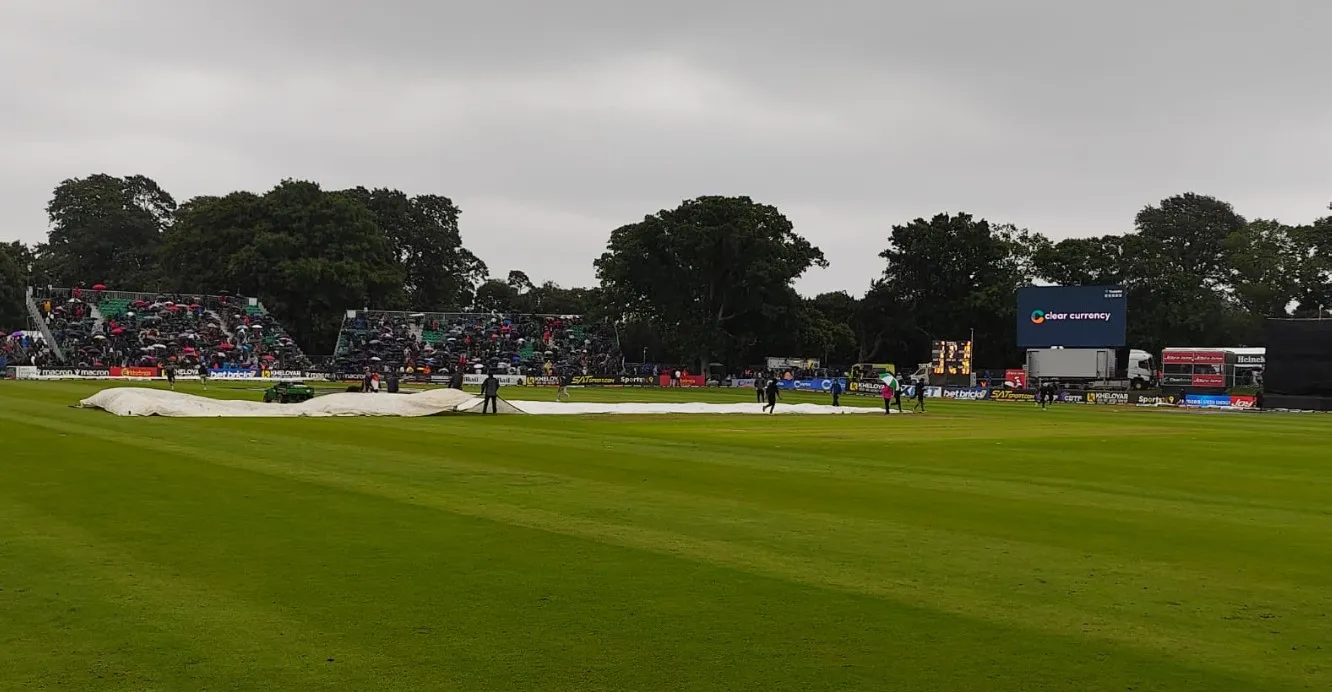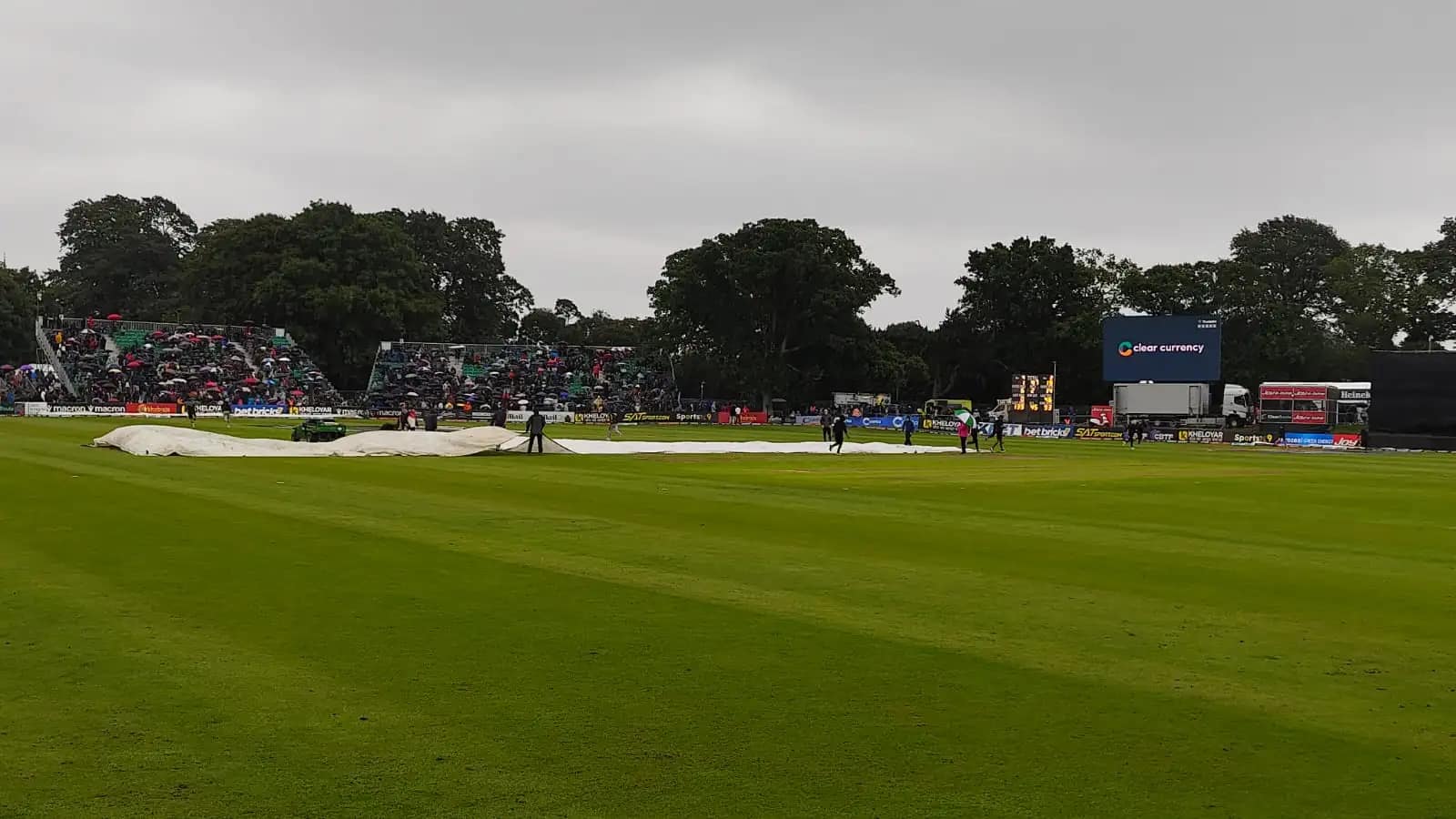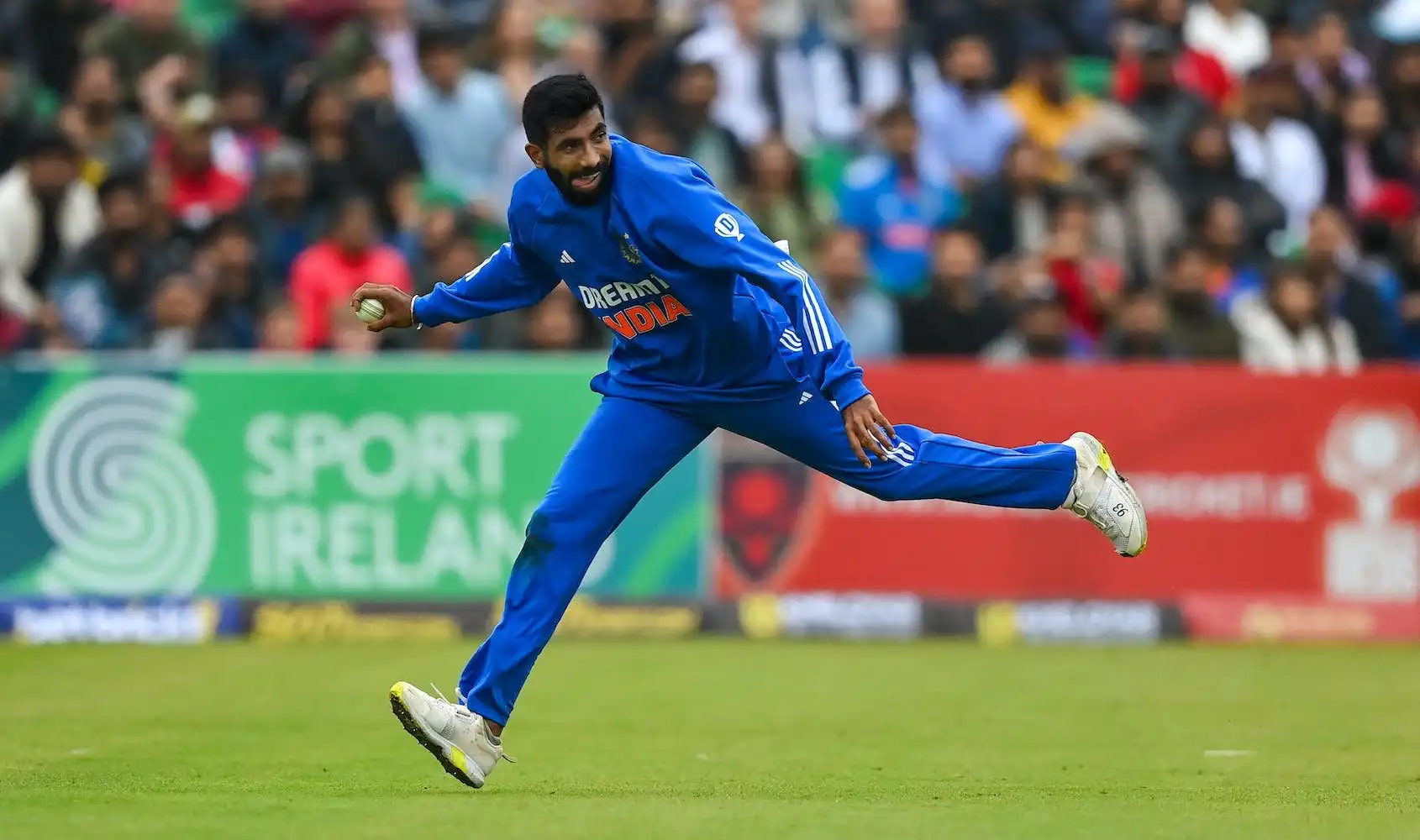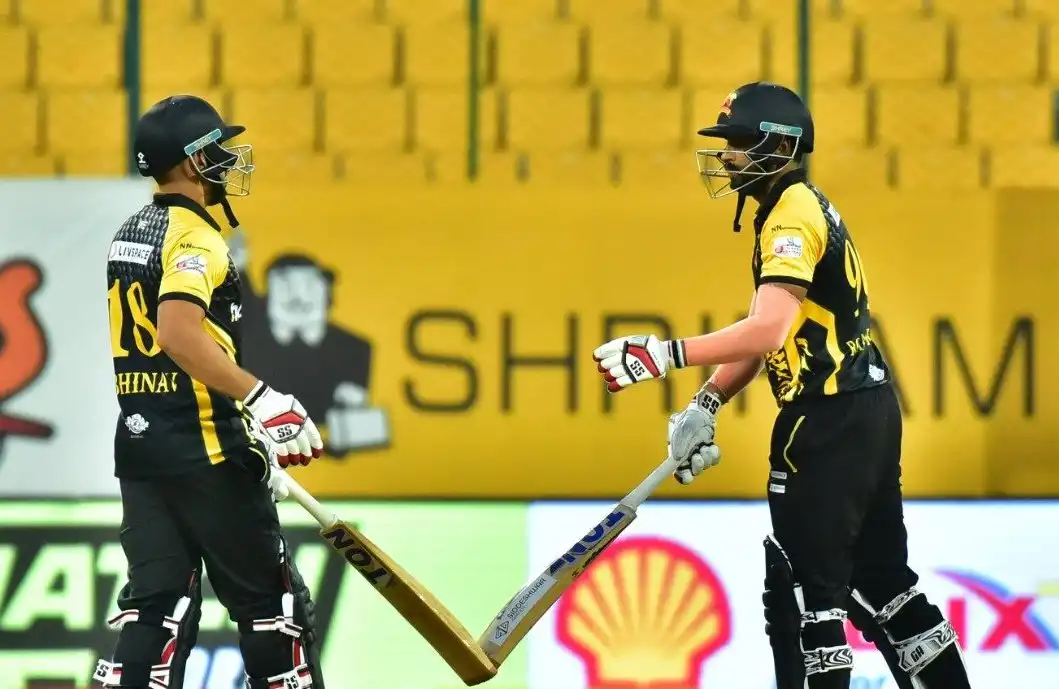 Rain played spoilsport in IRE vs IND 1st T20I [Twitter]
Rain played spoilsport in IRE vs IND 1st T20I [Twitter]
The first T20I of the three-match series between Ireland and India witnessed an unexpected turn of events as rain played spoilsport, leaving fans and players disappointed.
The Indian team, under the leadership of the returning Jasprit Bumrah, managed to clinch a victory by a narrow margin of 2 runs, thanks to the Duckworth-Lewis-Stern (DLS) method.
What is DLS method?
As the match was curtailed due to rain, many fans were left puzzled and questioned the DLS method's role in determining the game's outcome. Queries like "What is DLS method," "Duckworth Lewis method calculator," "Duckworth Lewis formula," "DLS full form," and "Who is duckworth lewis" started trending on social media.
Here's everything you need to know about the Duckworth-Lewis Stern Method.
For the unversed, the Duckworth-Lewis-Stern (DLS) method is a mathematical formula employed to adjust target scores in limited-overs cricket matches affected by weather disruptions.
Who formulated the DLS method?
Developed by Frank Duckworth and Tony Lewis and later refined by Professor Steven Stern, the DLS method aims to ensure fairness when one or both teams lose out on their batting opportunities due to interruptions.
In the context of the match, Ireland set a competitive target of 139/7. The Indian team, in response, was going steady at 47/2 in 6.5 overs when rain intervened, making further play impossible. When play ceased, the DLS method was brought into action to determine the outcome. As a result, India was found to be ahead by two runs, securing a win for them.
Prinicple of the DLS method
The essence of the DLS method revolves around two resources every batting side has at the beginning of its innings - the number of overs to be bowled and the number of wickets in hand.
The method uses pre-calculated tables to determine the percentage of resources each team has at any given point. When an interruption occurs, the total resources available to both teams are adjusted, and a revised target is set based on these adjustments.
What is the Duckworth Lewis formula?
While the exact formula is more complex and derived from extensive data modelling, a basic outline is as follows:
For an interruption in the second innings:
Revised Target=Team 1′s Score+(Team 2′s resources before interruption−Team 2′s resources after interruption)
Note: "Resources" in this formula refers to the resource percentage derived from the D/L tables based on overs left and wickets lost.
For example, India's resource percentage before and after the rain break was computed in this match. The difference in resources effectively lost due to the interruption then contributed to the final result, placing India ahead by two runs.
Restrictions of the DLS method
While the DLS method provides a structured way to address rain-affected games, it has faced its fair share of criticisms. Critics argue that the method doesn't always mirror the specific dynamics of every game and relies on the assumption that teams utilize their resources optimally.
- The D/L method can sometimes produce results that feel counterintuitive. This is because it's a generalised model and might not always reflect the specific nuances of every game.
- The method assumes that teams use their resources optimally, which isn't always the case in real-world situations.
However, in the absence of a universally accepted alternative, the DLS remains the go-to mechanism for matches disturbed by external factors.







